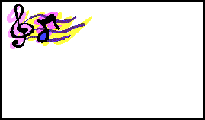Changing The Bass Notes
Apr 11th, 2008 by admin
This is a really useful ‘trick’. Well, at least I think so myself. ![]()
Most of the time when we play a chord on the right hand, the left hand would accompany that with a bass note (or octave) that corresponds directly to the chord. For example, when you play a C chord with your right hand, you would play a C note with the left hand as the ‘bass’
In fact, by combining the chord on your right hand with a different bass on your left hand can produce some quite interesting sound.
For example, try playing an F chord on your right hand and a G note on your left hand at the same time. How does that sound?
Try it the other way round, i.e., playing a G chord on the right hand accompanied by an F note on your left hand. How do you like that?
I am sure these sounds are quite familiar to you. You have heard them in some songs somewhere. Just when exactly can such combinations be used? I will come to that on another post another day. As for now, I just want to point out that there are various bass notes one can use to accompany a chord to ‘tweak’ the chord and make it interesting.
In ‘The 3 Basic Chords’, we came across the corresponding 3 bass notes for Chord I, IV, and V. These bass notes are ‘do’, ‘fa’ and ‘so’. What else? ![]()
Then, in ‘The 3 Minor Chords’, we came across 3 more bass notes: ‘re’, ‘me’ and ‘la’. Wait a minute, in fact right there we were already tweaking our Chord I, IV and V into Chord VI m, II m, and III m, simply by combining the 3 basic chords on the right hand with different bass notes on the left hand.
Anyhooser, that leaves us with the ‘ti’ note on the bass that is still not covered yet by any chord. In other words, if you were playing in the key of C, your bass has pretty much covered most of the ‘white’ notes in the C scale, except the B note (i.e., the ‘ti’ in the C scale). However, a couple of questions remain:
- Does the C bass note, for instance, always go with the C chord?, i.e,. Does the ‘do’ note always go with Chord I?
- What about those ‘black’ notes, the sharps and the flats? Will we ever play them?
The answer for the first question is ‘No’, and for the second question is ‘Yes’. I shall go into detail another day.
So much for now.





[...] slightly to produce a better sound. Remember that F chord and G bass note combination on part 1? This is where it becomes useful. Let’s do that for Chord V (the last chord) in this progression, [...]
[...] Left-Hand bass note. The second last chord is F/G instead of G to produce a better sound (See “Changing The Bass Notes” and “Changing The Bass Notes (part 2)” [...]